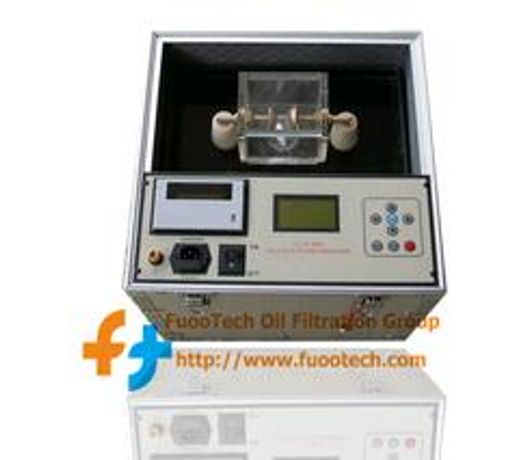Choosing the Right Dielectric Transformer Oil for Maximum Performance
The option of dielectric transformer oil is a critical choice that influences not just the effectiveness and dependability of electric systems yet also their ecological footprint. As we check out the subtleties of various oil kinds and their ramifications, it comes to be evident that the right option can lead to considerable operational advantages, triggering a better exam of best practices in this critical location.

Relevance of Dielectric Oil
Dielectric oil plays a crucial role in the procedure and long life of transformers, functioning as both an insulator and a coolant. Its primary feature is to stop electrical discharges between live components, thus safeguarding the stability of the transformer. The insulating buildings of dielectric oil aid preserve a secure electric environment, which is important for the effective functioning of transformers running at high voltages.
In addition to insulation, dielectric oil effectively dissipates warmth produced throughout the transformer's operation. This cooling ability is vital, as excessive heat can cause decreased performance and premature failing of the transformer components. The oil circulates within the transformer, taking in warm and transferring it to a cooling system or the surrounding atmosphere, hence keeping optimum operating temperature levels.
In addition, dielectric oil adds to the general reliability and security of transformers. By reducing the risk of electrical mistakes and overheating, it improves the functional life-span of the devices. Routine tracking and maintenance of dielectric oil quality are vital to guarantee that these features are done effectively, eventually resulting in enhanced efficiency and decreased operational costs in electrical power systems.
Secret Quality to Think About
When choosing transformer oil, several crucial properties must be carefully evaluated to make certain ideal performance and integrity. The dielectric toughness of the oil is vital; it shows the oil's capacity to withstand electrical stress and anxiety without damaging down. A higher dielectric strength enhances the transformer's performance and security.
Second of all, the thickness of the oil plays a necessary role in heat dissipation. Oils with proper viscosity guarantee effective blood circulation and air conditioning within the transformer, preventing overheating and keeping performance.
Oxidation stability is one more critical property, as it determines the oil's resistance to deterioration in time. Oils with superior oxidation stability preserve their performance qualities much longer, expanding the life of the transformer. Lastly, the presence of ingredients can enhance various residential properties of the oil, such as anti-corrosiveness and foam reductions, additional adding to functional longevity (used transformer oil).
Types of Transformer Oils
Understanding the numerous types of transformer oils is necessary for choosing one of the most ideal option for specific applications. Transformer oils largely drop into two groups: mineral oils and artificial oils.
Mineral oils, originated from refining crude oil, are one of the most typically used dielectric fluids. They possess superb insulating homes and are economical, making them a prominent choice in common transformer applications. Within this category, there are even more distinctions based on additives, such as anti-corrosive and antioxidant agents, which improve efficiency and longevity.
Synthetic oils, on the other hand, are crafted liquids made to offer exceptional thermal security and oxidation resistance. Although usually extra costly than mineral oils, synthetic choices can provide much better efficiency in severe problems, making them ideal for high-temperature or high-voltage transformers.
Another arising group is biodegradable transformer oils, acquired from sustainable sources like veggie fats. These options are getting traction as a result of their environmental advantages, although they might not yet match the performance metrics of traditional oils.
Inevitably, selecting the ideal transformer oil depends on the certain operational needs, cost considerations, and desired performance qualities of the application handy.
Ecological Impact and Rules
The environmental influence of transformer oils has actually come under enhancing see scrutiny as regulative structures advance to deal with sustainability concerns. Traditional mineral-based transformer oils present numerous environmental threats, consisting of possible contamination of soil and water bodies in the occasion of spills or leakages. The poisoning of these oils can bring about resilient ecological damage, demanding rigorous policies to reduce risk.
In action to these obstacles, regulatory bodies are applying a lot more durable standards governing the use and disposal of transformer oils. These guidelines often motivate the adoption of eco-friendly and much less unsafe choices, such as ester-based dielectric liquids. Such options not just decrease ecological influence however also boost safety in terms of fire and health dangers.
Additionally, sector stakeholders are progressively held liable for the lifecycle monitoring of transformer oils, from manufacturing to disposal. Conformity with environmental laws is not only a legal obligation however additionally a crucial element of business social duty. As the need for lasting techniques grows, companies are urged to stay informed concerning evolving regulations and think about the environmental implications when picking transformer oils. This proactive strategy is necessary for lining up with both social expectations and governing needs bordering environmental stewardship.
Best Practices for Choice
Because of the enhancing ecological factors to consider and governing stress surrounding transformer oils, selecting the proper dielectric fluid calls for mindful analysis of various aspects. Begin by examining the certain functional demands of the transformer, consisting of voltage levels, tons problems, and ambient temperature levels. Each site link application might require this content unique oil homes to make certain optimum performance and integrity.
Following, think about the dielectric strength of the oil, which straight affects its protecting capacities. A greater dielectric toughness normally equates to boosted safety and security and performance (used transformer oil). Furthermore, check out the thermal conductivity of the liquid, as this influences warmth dissipation and overall transformer cooling
Another crucial aspect is the oil's environmental impact. Select eco-friendly or much less hazardous liquids when feasible, straightening with sustainability goals and conformity with guidelines. Ensure that the chosen oil has a proven performance history in comparable applications, as this can give understandings into its long-lasting efficiency and dependability.
Verdict
Picking the suitable dielectric transformer oil is essential for optimizing performance and guaranteeing dependability in electrical systems. The fostering of eco-friendly oils not just sustains sustainability yet additionally complies with governing standards.

In addition to insulation, dielectric oil efficiently dissipates warmth produced during the transformer's procedure.Furthermore, dielectric oil adds to the overall integrity and safety and security of transformers.Picking the proper dielectric transformer oil is essential for enhancing performance and making certain dependability in electrical systems.